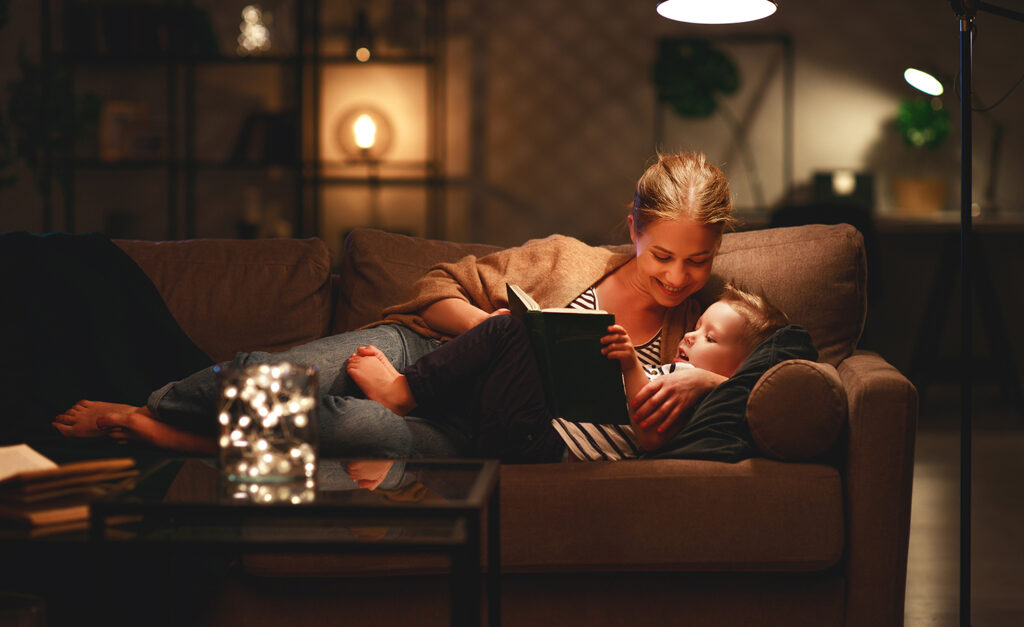HAVE YOURSELF A SPARKLY SOLAR CHRISTMAS
Updated November 30, 2023
By Morgan Pierce
Nobody does Christmas like the Irish. For us, it’s not a day, it’s a season in itself. Now that “The Late Late Toy Show” has come and gone, the race to see who can throw up the most Christmas lights around the house and garden is upon us. Already there’s a house near me with so many red lights up it has earned the nickname “Santa’s Bordello.”
Perhaps like me, then, you were horrified when – Grinch-like – the UN crept in last week, with its annual Emissions Gap report in hand, seemingly determined to darken Christmas. The report warned that government pledges to tackle climate change are just not enough to do what is needed. Without more concerted action, the world faces a rise in temperature of between 2.5C and 2.9C above preindustrial levels.

“Present trends are racing our planet down a dead-end 3C temperature rise,” said U.N. Secretary-General Antonio Guterres. “The emissions gap is more like an emissions canyon.”
If the rise does hit 3 degrees, scientists predict the world “could pass several catastrophic points of no return,” from the runaway melting of ice sheets to the Amazon rainforest drying out.
“There is no person or economy left on the planet untouched by climate change, so we need to stop setting unwanted records on greenhouse gas emissions, global temperature highs and extreme weather,” said Inger Andersen, Executive Director of UNEP. “We must instead lift the needle out of the same old groove of insufficient ambition and not enough action, and start setting other records: on cutting emissions, on green and just transitions and on climate finance.”
While the frustrated UN experts limit their criticism to government leaders, the underlying propositions of their research is frightening. Anyone reading the report should reasonably be asking themselves, “What else can I do?”
Climate scientists agree that hope of limiting the global rise in temperature to a catastrophe-averting 1.5 degrees depends on two things: mitigation and change.
Those can apply as much to individuals as they do to countries.
In simple English, “mitigation” means reducing how bad or harmful something is.
No, we are not telling you put away those Christmas lights. But we are asking you to think a bit before you begin festooning every inch of the house and garden.
Have a look at the lights you have. If you are still making use of strings of the kind of large, incandescent bulbs your parents used, you may want to purchase a few sets of modern LED lights. Using a 25-metre string of LED lights for eight hours, every night for a month costs about 64 cent, while the same size string of Christmas lights will set you back by €4.28. The cost is higher because you’re using more electricity, so making the switch is good for your wallet and the environment.
In recent years, we’ve seen an increased use of those “ropes” of LED lights. Perched on the roof, moulded into Santa’s sleigh and reindeer, it doesn’t take long for that kind of display to make your energy bill soar. Fifty metres of rope lighting will add €17.75 or more to your bill over the course of a month – so avoid them.
For outdoor displays, you could consider sending your old lights to be recycled and investing in a few sets of solar powered lights. Woodies, B&Q and the Solar Centre have an array of fairy lights, lanterns and Christmassy shapes.
Maybe the sums involved seem small, and the savings on overall energy consumption a fraction of the amount of “mitigation” the UN is talking about.
Maybe. But consider this. Research carried out on behalf of the Center for Global Development revealed that in the United States, Christmas lights consume 6.63 billion kilowatt hours of electricity every year. That’s more than the national electricity consumption of many developing countries – including El Salvador, Ethiopia and Tanzania.
Perhaps the mitigating effects of swapping Santa’s sleigh for something more energy efficient doesn’t seem like much. However, the decisive act of prioritizing the climate crisis over “tradition” reflected by these simple steps is huge.
Like the Ghost of Christmas Future – the Spirit who shows Scrooge that the future is not set in stone – UN Secretary General Antònio Guterres, reminds us that the future can still be changed by changing how we act now.
“We know it is still possible to make the 1.5 degree limit a reality. It requires tearing out the poisoned root of the climate crisis: fossil fuels. And it demands a just, equitable renewables transition,” Guterres said last week.
Having taken the small step, you might decide that 2024 is the year your household doesn’t just practice mitigation, but becomes part of that crucial transition. We’ve banged on about the benefits of going solar before, and – given that it’s our business – we’re likely to do it again. For now, we’ll simply say, “Tell the kids not to worry, Santa’s worked out a technique for avoiding the solar panels when he lands.”
Investing in Solar Panel Systems Can Bring Many Benefits, including reduced energy bills, increased energy independence, and a reduced carbon footprint. If you are interested in installing a solar panel system, it is worth exploring the different grant options available and seeking professional advice from one of our solar energy advisors.
Feel free to contact us for more information, we’re here to help.
